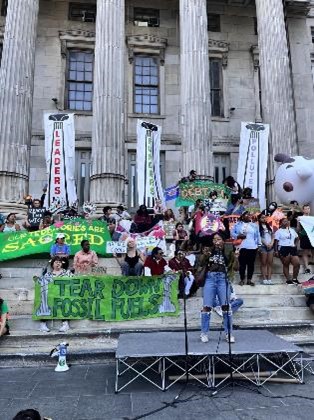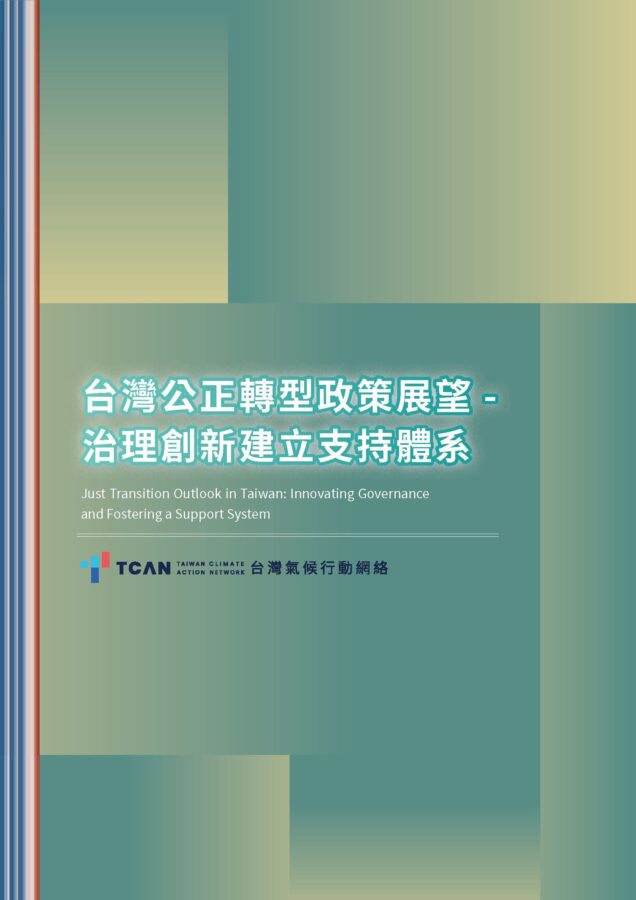On the afternoon of Friday, September 20, people from around the world marched across the Brooklyn Bridge, chanting, “We demand climate justice now!” to kick off New York Climate Week. The Taiwan Climate Action Network, composed of five climate advocacy groups, including the Green Citizens’ Action Alliance, the Homemakers United Foundation, the Environmental Rights Foundation, the Taiwan Environment & Planning Association, and the Global Citizen of the Earth, Taiwan all participated for the first time in this New York Climate Week, ensuring that the world recognizes that Taiwan, a vital part of the global environmental movement, that should not be overlooked.

Figure 1

Figure 2: People from around the world participated in ‘Fridays for Future,’ crossing the Brooklyn Bridge.
The New York Climate Week is organized by the non-profit organization Climate Group, bringing together environmental groups from around the world to discuss climate-related issues over nearly two weeks throughout New York City. This event typically takes place during the United Nations General Assembly and is one of the largest grassroots movements and actions leading up to the annual UN Climate Change Conference (COP).
The march on September 20 is part of “Fridays For Future” (FFF), a global climate strike initiated by Greta Thunberg in 2018, which has since sparked an international and intergenerational response worldwide. The main theme of this march is climate justice, with related demands being raised during the event:
- Changing the Injustice of Misallocated Funds
With slogans such as “No more oil, no more coal,” and “Fossil fuel has got to go,” protestors respond to the immense fossil fuel funding provided by Wall Street, the financial center of the world. Among these banks, Citibank has been identified as the largest investment bank in the fossil fuel industry, reportedly providing around $4.2 billion in bonds.

Figure 3: Parents pose for a photo with their children in front of a banner demanding that politicians and investors cease funding fossil fuels. The banners display the three main targets of this protest: corporations’ environmental impact, demanding they stop polluting; investors, demanding an end to investing in fossil fuels; and political leaders, demanding they take proactive climate action.

Figure 4: During the march, the renowned young climate leader Mize Jonell Tan (left) is pictured with her colleague (right) raising an anti-military sign. This sign criticizes powerful and wealthy nations for foolishly prioritizing military strength over investestments into climate forward governance.
- Changing intergenerational injustice
Many members of the Fridays for Future march are teenagers who, at an age when they should be enjoying their youth, have instead taken to the streets to protect their endangered future. One of the organizers, a teenager under 18, criticized the financial industry in their speech, condemning the short-sighted focus on investing in fossil fuels over long-term sustainable development. This idea was echoed in a song heard during the march, “If you ask my great-granddaughter when action should be taken, she’ll say the time is now!”

Figure 5: The march prominently featured young people, as many of the lead organizers were in their early teens.
3.Challenging power injustice
New York Governor Kathy Hochul was one of the figures targeted during the march for her recent refusal to sign the Climate Change Superfund Act. This bill would have required polluters to pay $3 billion annually to protect communities from extreme heat and fund other climate resilience projects. While New York residents endured periods of high heat, the governor ignored the people’s demands in her final say. In protest, demonstrators chanted, “Governor Hochul, Earth is not for profit!” The crowd also called, “This is how justice looks, this is how community looks!”

Figure 6: New York residents during the march demanded that the governor ratify the Climate Change Superfund Act.
Challenging international injustice
During the march, an activist from Uganda emphasized that despite Uganda’s negligible carbon emissions, the country still suffers from climate impacts like extreme heat caused by wealthy nations. For her, participating in environmental movements is not a choice, but a necessity. Numerous other environmental activists in Uganda have been arrested for their involvement in climate protests.

Figure 7: Climate action advocates from Uganda speaking on stage
Similarly, Taiwan, another nation facing extreme climate impacts, has also been unable to participate in international climate negotiations due to political complications. During the march, the Taiwan Climate Action Network championed the motto: “Leave No Taiwan Behind, Limiting Carbon Without Limiting Taiwan.”

Figure 8: During the march, we were delighted to meet second-generation Taiwanese Americans.

Figure 9: A total of seven members from TCAN participated in this event; the image shows six partners who took part in the march.
Moving Forward Despite Frustrating Realities
Crossing the Brooklyn Bridge, once the longest bridge in the world, feels like bridging a chasm created by climate change. On one end stand politicians and corporate polluters, while on the other end stand the victims suffering from extreme climate impacts. As the marchers chanted, “We are unstoppable, a better world is possible!” it became clear that the people’s momentum could not be hindered, and change could indeed become reality.
In addition to participating in this march, The Taiwan Climate Action Network will host two forums, Energy Transition in East Asia and Decarbonizing the Chip Industry, with international partnership organizations. These forums aim to express the civil power and compelling vision of Taiwanese citizens to impact major climate issues to players on the international stage, emphasizing that Taiwan’s path to a Net-Zero Transition cannot be overlooked in the global movement.


